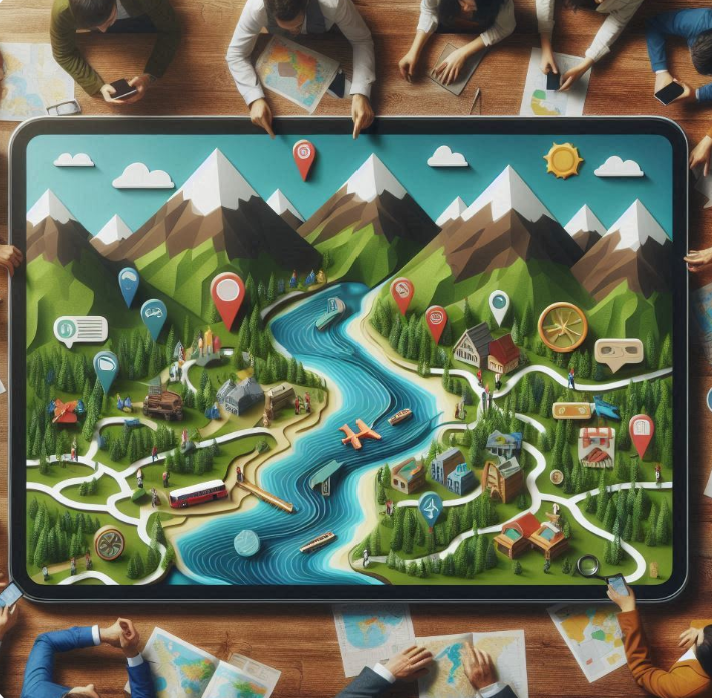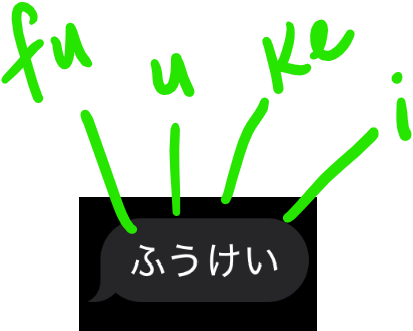Valerie’s interview with Bonnie Stewart, associate professor from the University of Windsor in the faculty of education, was another really interesting one for me. I must admit, I don’t fully understand the depth of everything they were discussing, but a few things made me think.
Bonnie described our increasingly technical living and teaching environments as a landscape. She said that the landscape we accept exposes us. It made me think of the landscape in general and all the different types of landscapes Canada has. I’m from Ontario where the landscape isn’t as mountainous as it is here in BC. Also, the conditions that the landscape undergoes is different– snow in winter vs months and months of rain. I think about my newcomer students who many times land in different landscapes of Canada (usually places with a lot of snow) and then work their way to the west coast in search of a gentler climate. But here they are faced with gloomy winter days and if that doesn’t depress them then the housing cost will. So, no matter where one lives, concessions are always made, and I see now how this can apply to technology in our lives too. When one takes easy routes and uses tech without thinking through all the implications, exposure to threats will occur.
Bonnie said that, when we touch any device, we leave patterns and traces that can be monetized and sold. It made me think again about my newcomer students and what information is being collected from them. A quick search of maplediversity.ca reveals that 69% of newcomers pay attention to ads in their language and 68% feel a connection to those brands, so marketing is definitely crafted for different language groups.
What information is gained from newcomers through algorithms and their digital footprints?
Some potential ones might include:
Demographics and Preferences: Information about newcomers’ age, gender, cultural background, and preferences can help tailor services and products to meet their needs.
Behavioral Patterns: Data on how newcomers interact with digital platforms, such as mobile apps or websites, can reveal their habits and challenges in adapting to a new environment.
Service Utilization: Tracking digital footprints can show which government or community services newcomers’ access most frequently, helping organizations improve their offerings.
Economic Contributions: Algorithms can analyze purchasing patterns and financial activities to understand newcomers’ economic impact and needs.
Can I help my students protect their information?
I think educating newcomers on digital privacy is one way to help them protect their information. Showing them how to use secure platforms and how to keep their passwords safe are other steps in the right direction. Educating them on avoiding online scams and how their information is used is useful too. Scams To Avoid by the People’s Law School is one I like to use. The one downfall though, is that this is doable for higher level students who have the language skills, but lower literacy students cannot easily understand it. This is why it’s important to have translated resources and translating services to assist.

Topologies
And going further, Bonnie mentioned topologies and mapping the work that you do. This made me think of our blogs and the curated learning we are doing. I now envision it as a map of where I have been with my educational technology knowledge, where I am now, and where I want to continue to explore.
A march off a cliff…
And finally, to continue her geographic metaphor of tech, Bonnie says that “skill without literacy is a march off a cliff”. She explained that literacy takes skill to the next level. When I think about this, I feel that this literacy piece is something that my young kids are missing. They have the digital skills to connect with friends online and play the games, but they are missing the literacy which equips them with knowledge of the dangers, the exposure of the landscape.
Bonnie gave the example of having the skill of being able to read Korean, from knowing the characters and the phonetic sounds that the characters make but still missing the literacy. I can relate to this example as I have the same Japanese skills of being able to sound out the hiragana alphabet but not knowing the meaning of the word. For example, in the image below you can see a Japanese word written in hiragana and broken down into phonetic sounds – fuukei.

So, I know how to pronounce the word once I have learned hiragana – I have that skill, but I don’t necessarily know what fuukei means – until I gain the fluency. Such a great analogy!


Recent Comments